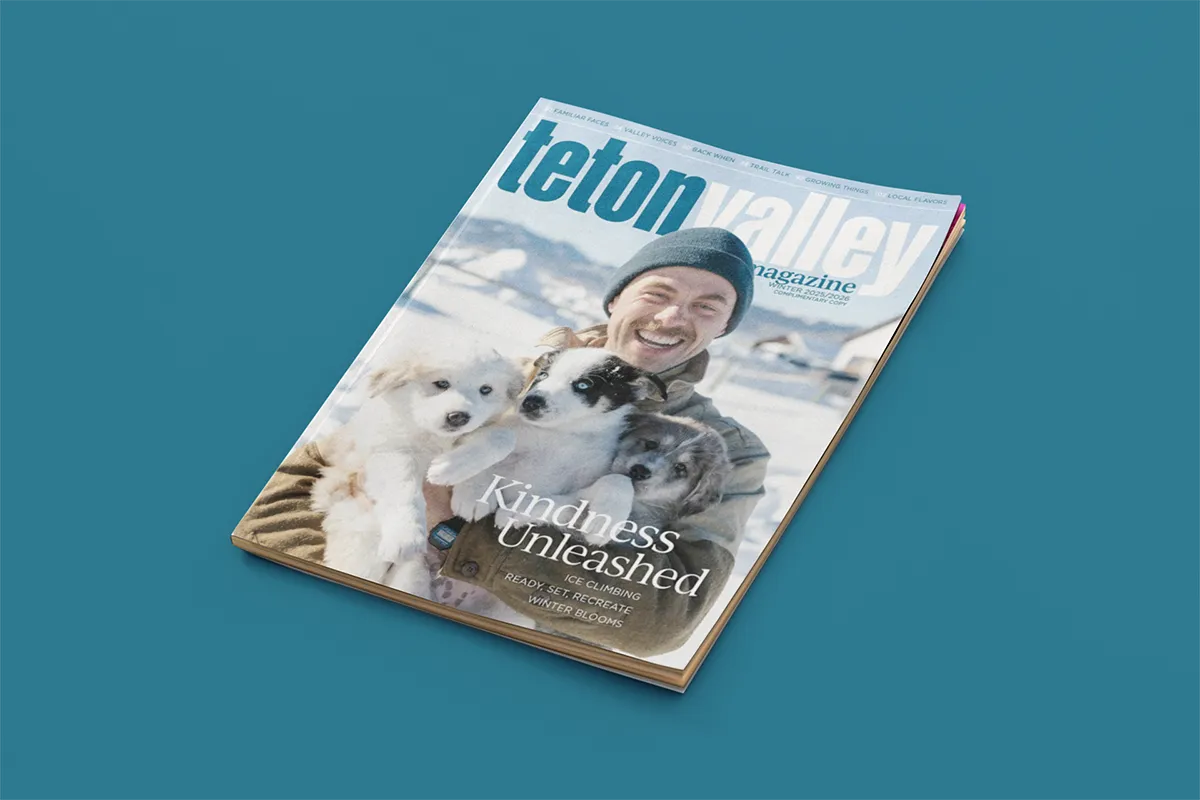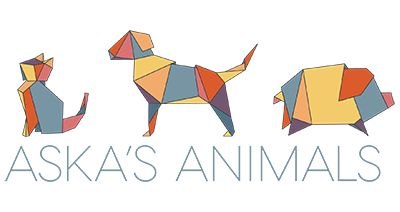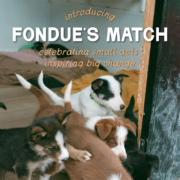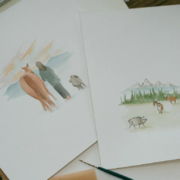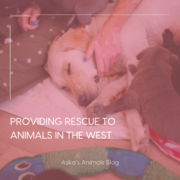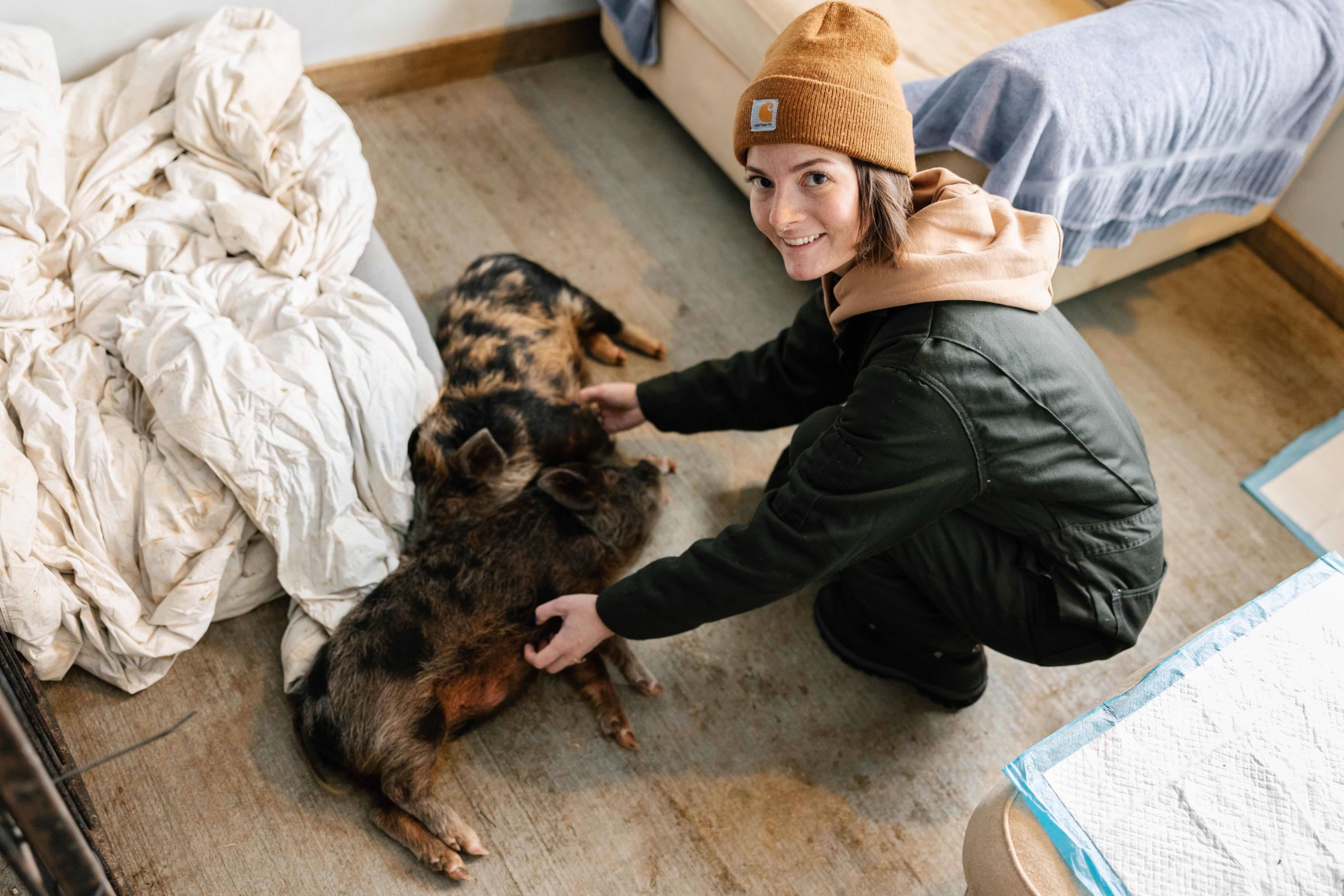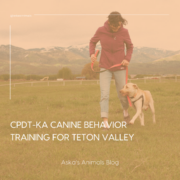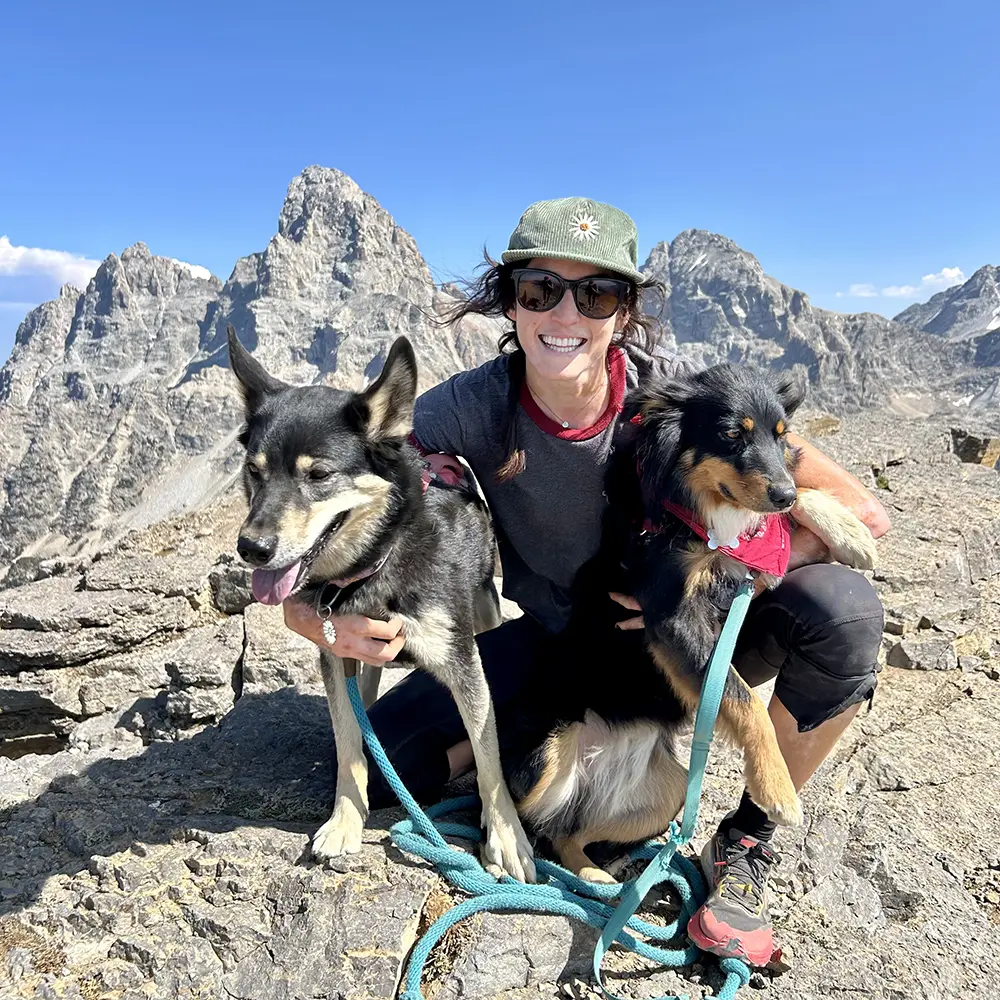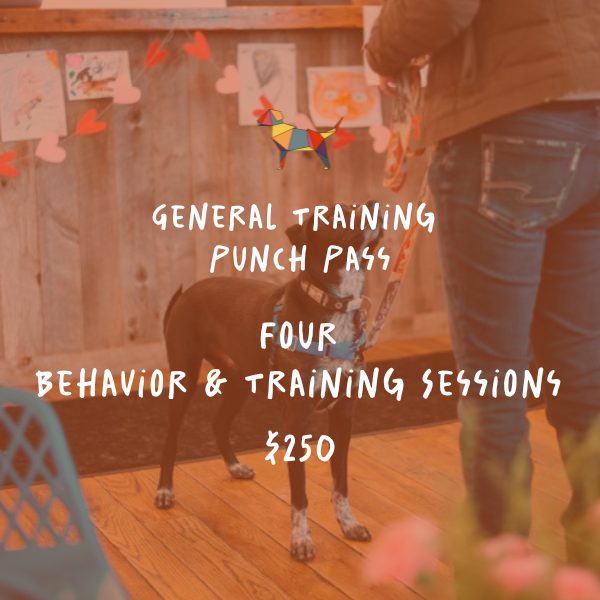With Our Canine Behavior & Enrichment Manager, Sam
With your support through the Tin Cup Challenge, we can continue advancing our mission to provide rescue, sanctuary, and canine behavioral support—not just for dogs, but for their people and all animals in need. Your generosity helps dogs like Rosie rewrite the ending of her story and turn the page to a new, hopeful chapter.

Meet Rosie.
She’s adoptable, thriving in foster care, and utilizing our Canine Behavior Program.
In 2024, Rosie found herself at the Western Fremont County Humane Society in Dubois, WY. Scared and stressed, Rosie wasn’t a very adoptable dog until she entered a foster family’s home and started working with our Behavior Team in March 2025. With support from her foster and our CPDT-KA trainer Sam, she’s ready for her forever home!
Grace, Rosie’s foster says, “Rosie is ~2 years old, 35 lbs, and a purebred mutt—maybe Border Collie, Kelpie, Whippet, or Greyhound. Adopted at 8 weeks and returned at 2 (through no fault of her own), she arrived under-socialized and fearful. For the past five months, she’s learned that the world is safe.
Rosie is respectful/playful with other dogs (though shy at first), excellent with cats, and has lived with young children. She’d love a home with another dog.
She’s a calm couch potato inside and an adventurous outdoor buddy. She loves walks, short hikes, and forest outings. She’s crate-trained, great on leash, and crushing it in training—especially recall and commands.
Rosie needs a patient adopter to help her keep growing. In return, she’ll offer deep trust, quiet affection, and loyalty. She’s not overly cuddly, but she shows love in subtle ways—greeting me in the morning, lying at my feet while I cook, or following me from room to room. She sometimes naps alone but always circles back for connection. She’s been one of my most rewarding fosters—watching her bloom has been incredible.”

Sam, our incredible Canine Behavior & Enrichment Manager, pursued the Dog Trainer Comprehensive Course with Karen Pryor Academy and most recently earned her Certified Professional Dog Trainer – Knowledge Assessed (CPDT-KA) certification. This nationally recognized credential reflects her understanding of canine behavior, commitment to positive reinforcement, and adherence to the highest standards of humane training. While we’ve always known Sam is one in a million when it comes to training and behavior, this gold-standard certification takes her expertise to the next level.
Sam’s lifelong love for animals big and small, wild and domestic, started at a young age. She remembers sitting with a bowl of Cheerios as a young girl, working with her childhood rescue pup, Arby, delighted to watch his enthusiasm for learning.
Sam pursued this passion academically at the University of Nevada, Reno, earning a degree in Wildlife Ecology and Conservation. Her time at the local Wildlife Sanctuary, Animal Ark, deepened her love for wildlife, especially the elusive coyotes, kit foxes, arctic foxes, and a charming desert tortoise, Mr. Peabody.

After moving to Jackson in 2014, Sam expanded her horizons in the animal field at the Teton Raptor Center, where she worked as a field technician studying various raptor species for nearly five years. Her career took a pivotal turn at Spring Creek Animal Hospital, where she discovered her true calling—working directly with people and their pets. Her dedication to animal welfare and rescue was further solidified at PAWS, where she recognized the critical need for behavior support within shelter systems.
Now, as the Canine Behavior and Enrichment Manager at Aska’s Animals, Sam is excited to continue her journey of learning and growth. She is committed to helping pet owners and shelter partners better understand and support their canine companions, ensuring they feel their best and thrive in their environments.
Looking for a dog trainer? Keep in mind that anyone can say they’re a dog trainer, but not everyone backs it up with credentials. Here’s why a CCPT matters:
✔️ Uses proven, humane, science-based methods
✔️ Has real-world, verified experience
✔️ Stays current through continuing education
✔️ Follows a professional code of ethics
It’s like hiring a licensed contractor instead of a DIYer…you want the real deal when it comes to your dog’s behavior and well-being. There are only 3 other CPDT certified trainers in a 100 mile radius of Victor.

Jenna, the Advancement Director at Aska’s Animals says, “For pet owners and animal welfare organizations, this certification provides peace of mind—knowing that the trainer has both the experience and the knowledge to support dogs compassionately and effectively. At Aska’s Animals Foundation, we are proud to have a CPDT-KA certified professional as part of our team, ensuring the highest quality of care and training support for animals in our community.”
We offer many different ways to assist individuals, fosters, shelters and rescues with canine behavior. Head to our website to check out our Canine Behavior Support Programs and free Canine Behavior Videos. To contact Sam for individual canine behavior support, email sam@askasanimals.org.
The Aska’s Animals mission is to provide rescue, sanctuary, and canine behavior training to our community. With your Tin Cup donations, we can continue to educate our staff so more tools, knowledge, and compassion go into our work with canines in need and the humans who love them. 24/7, 365. Donate today.
Photos by: @sheltervisibilityproject
